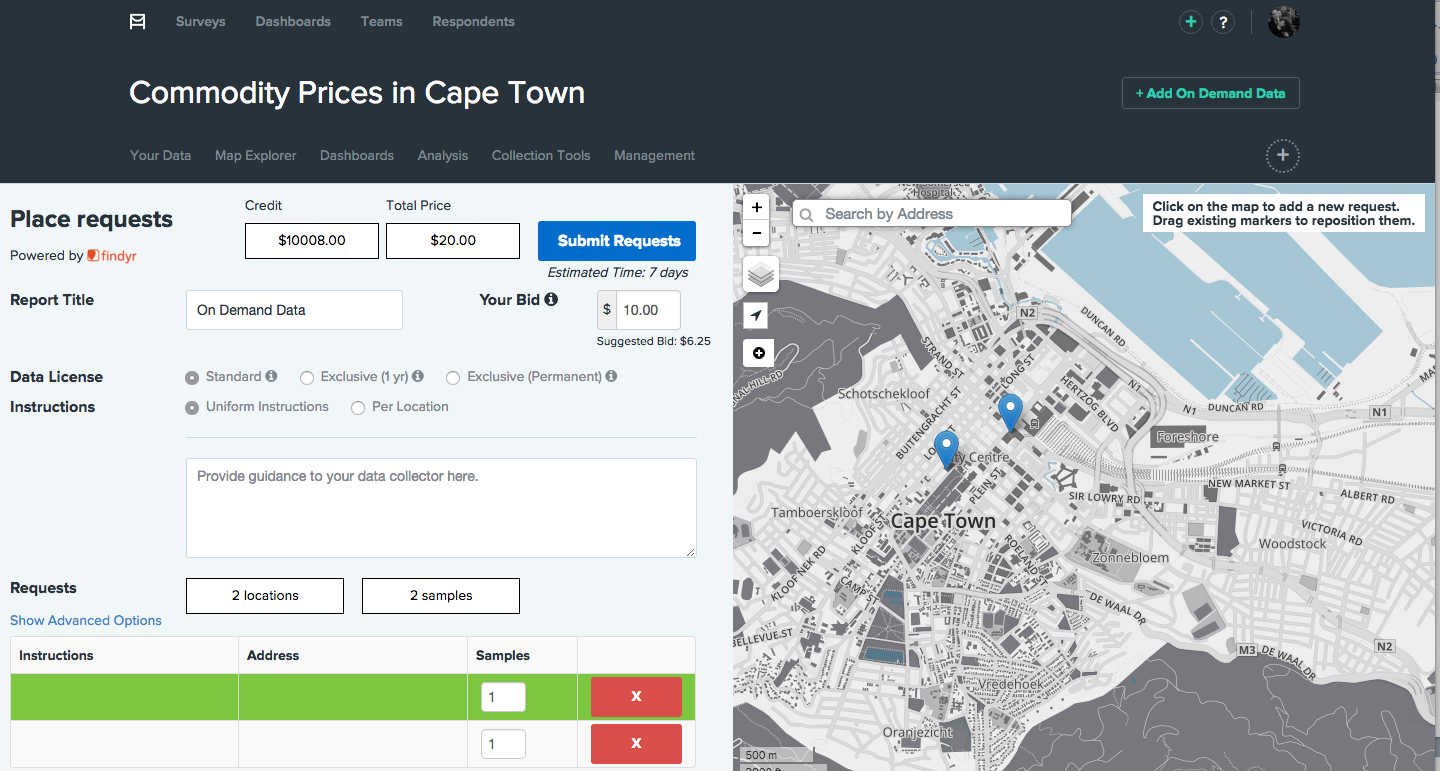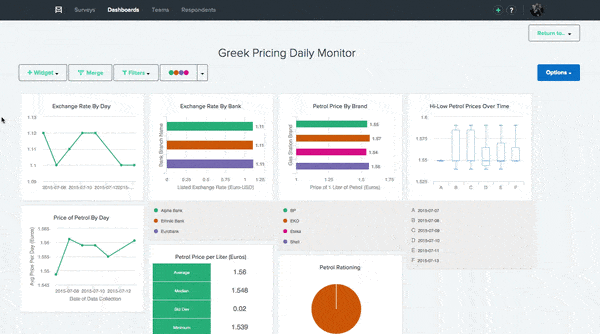Today, most of us can have Pad Thai, a craft cocktail, and a professional masseuse all arrive at our doorstep with a click of a button on our phones, but the same can’t be said about data for our projects. I can’t tell you whether the thousands of schools we paid for last year were actually built and functioning! How about an on-demand service for that data-delivery?
The on-demand economy is delivering increasingly brilliant things for our daily lives – at least in advanced economies. There are so many on-demand food delivery options that investors now see the market is beginning to bottom out with saturation. Last year, over $3.89 billion, purely of venture financing, went to on-demand startups other than Uber.
But it’s yet to penetrate how we do business. First Mile Geo wants to change that.
Insights on Demand
We call it Insights On Demand. Drop a pin anywhere in the world, place a bid, task a local to capture data on your behalf, and generate near real-time dashboards, maps, and comparative analytics. No tech team, no GIS specialists, no field managers tabulating survey results. The entire process delivered, on-demand.
How it works
The process is pretty simple. Like all of the other tools you may have seen in First Mile Geo (eg mobile, SMS, websurveys, physical sensors), all you have to do is create a form or survey then select the technology for collection –in this case ‘on demand’.
Drop a pin (or multiple), set a sample size (running a survey?), set a bid on how much you’re willing to pay, and you’ll see results shortly thereafter.
As data arrives you’ll be greeted with real-time maps, dashboards, and powerpoint or pdf executive briefing documents in your preferred language.
A future envisioned
Today, there are over 4 dozen mobile data collection apps. And that’s not even including the other ways we use phones like SMS, IVR, or mass analysis of phone use patterns. But regardless of how we use these tools, data analytics can still be time-consuming: identify the need, allocate resources, create a survey or form, train enumerators, analyze results, write-up findings, brief it, and market the successes.
The future of data analytics in development, where systems are smarter and the institutional burden is lessened, is arriving. We think data delivered on demand, through services like our affiliate partners at Findyr, will have a major role to play in realizing it.
We are excited to have Matt present a demo of First Mile Geo’s Insight on Demand in our data collection course tomorrow! Interested in learning how to implement technology for your M&E needs? Check out our courses related to Technology for Monitoring and Evaluation!
About Matt

Matt McNabb is CEO of First Mile Geo and a member of the TechChange Board of Advisors. He also serves as an Adjunct Fellow at the American Security Project and a member of the Board at Epirroi, a Beirut-based management consulting firm.



